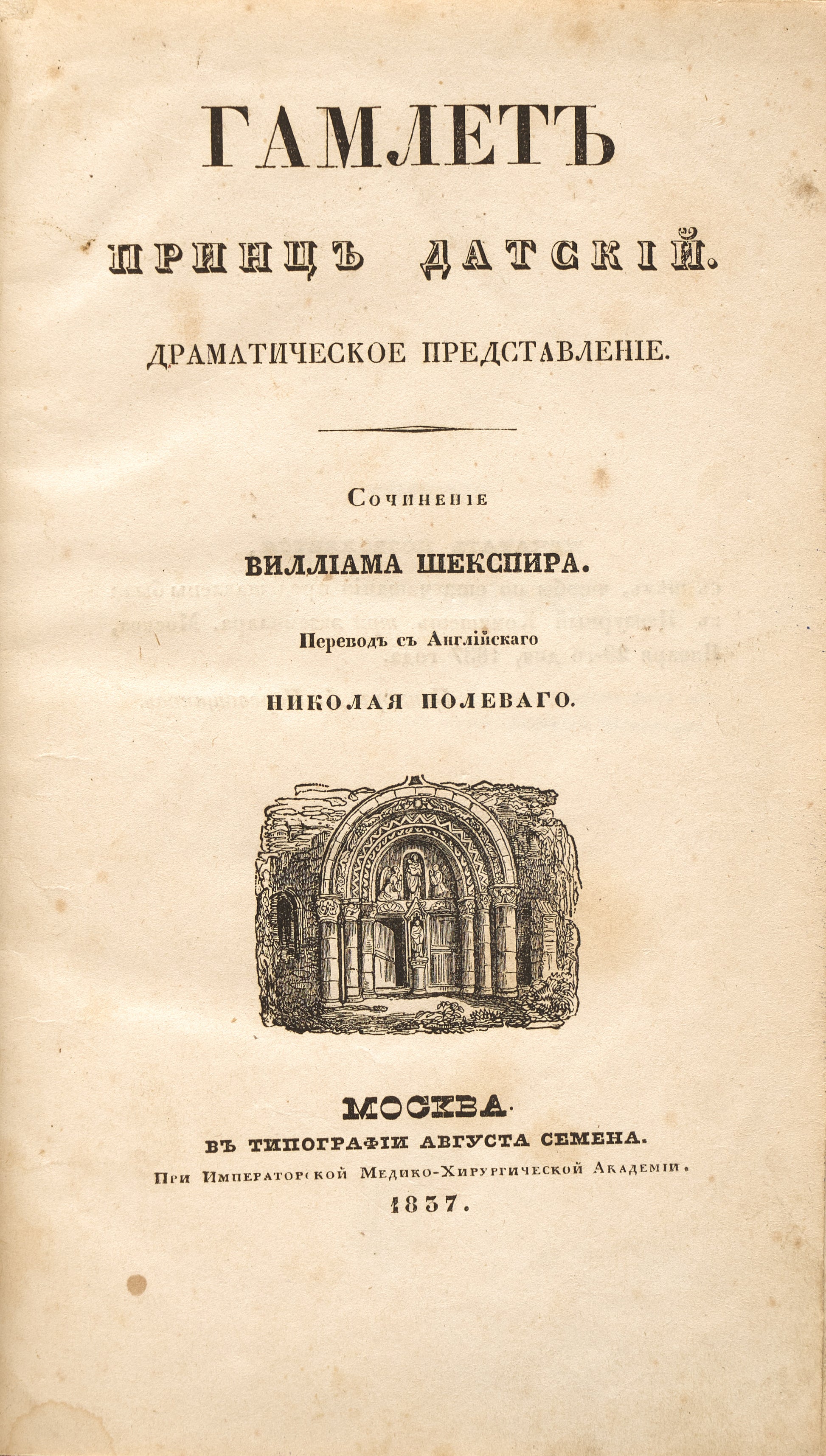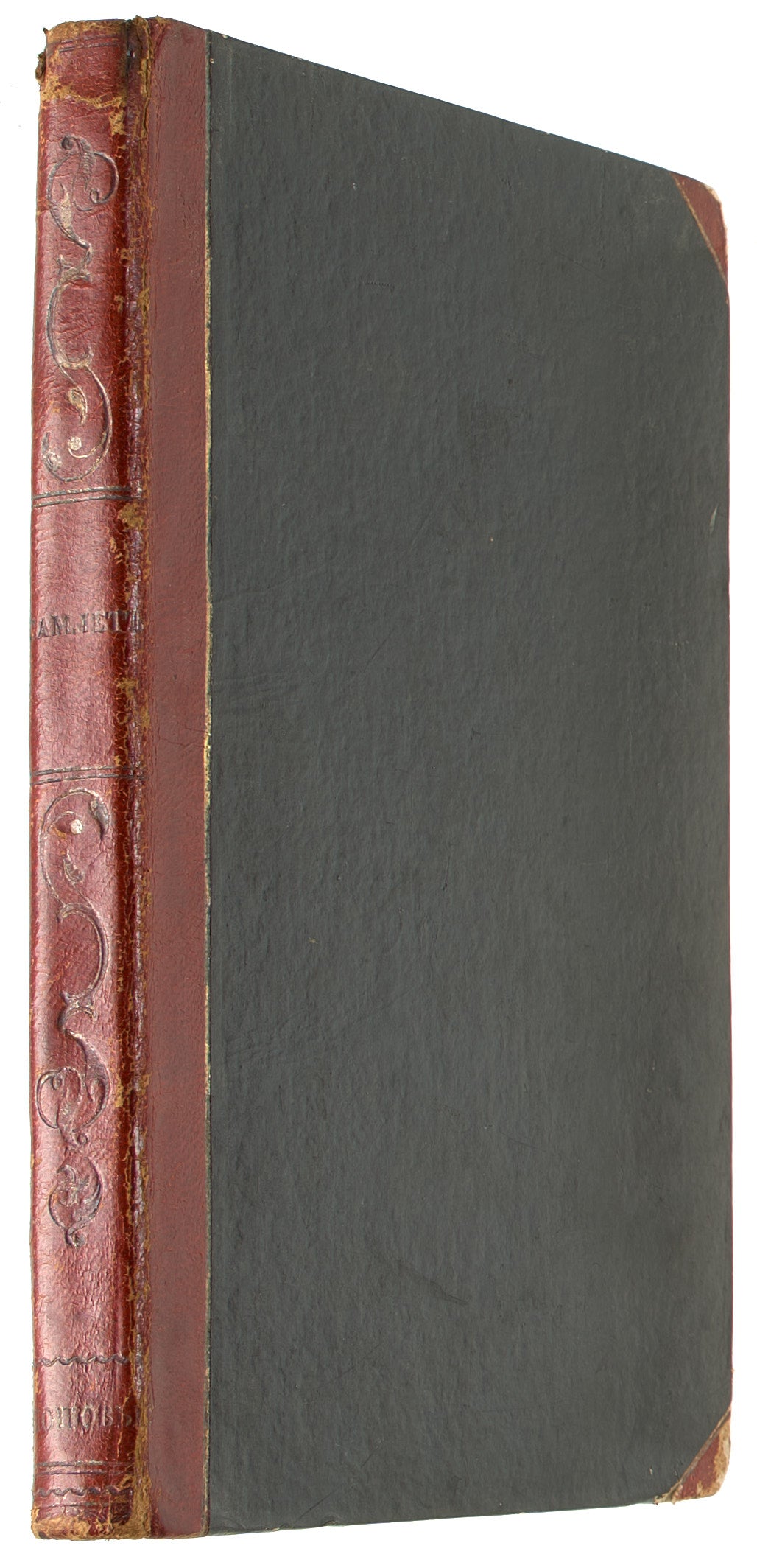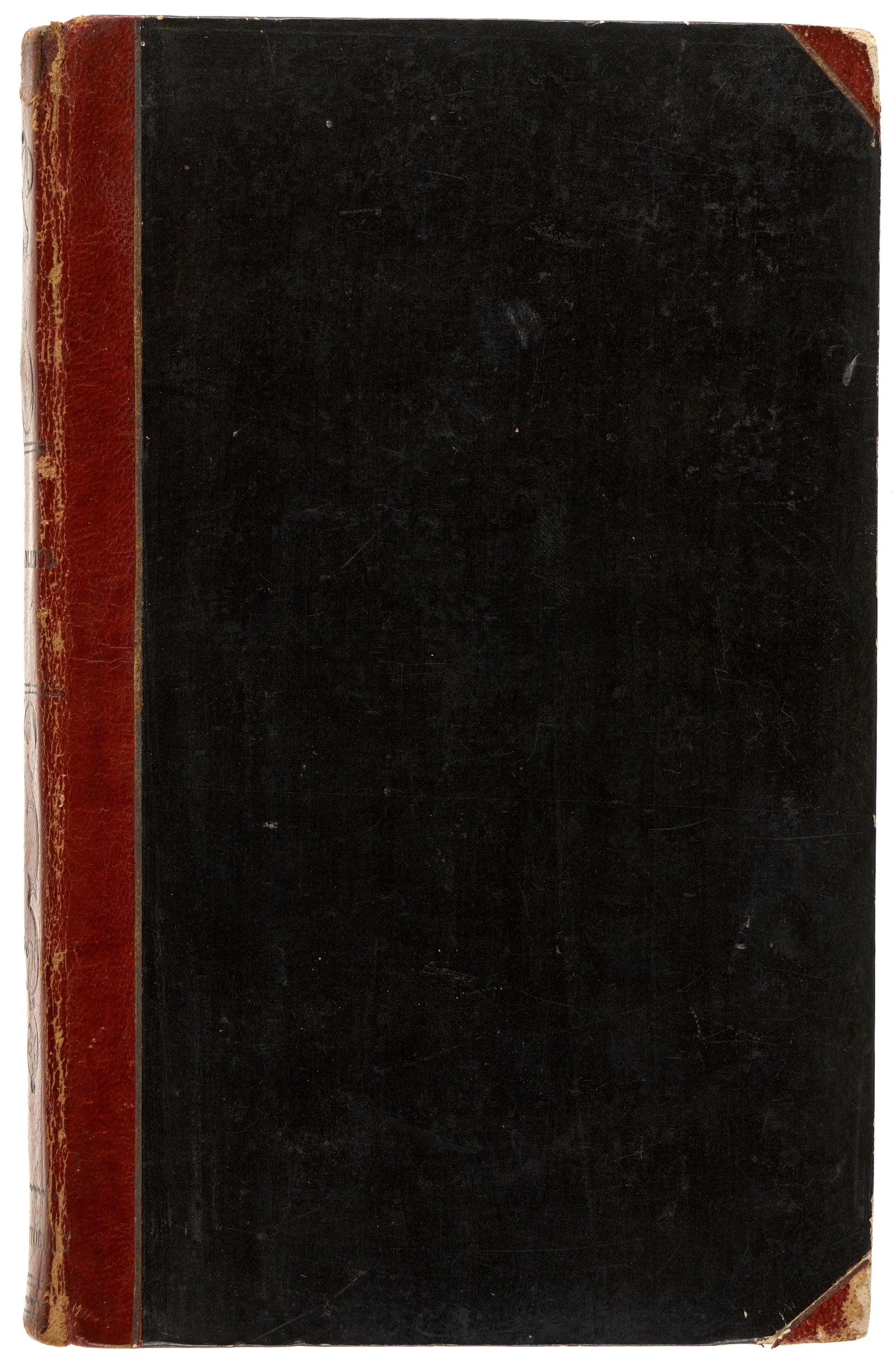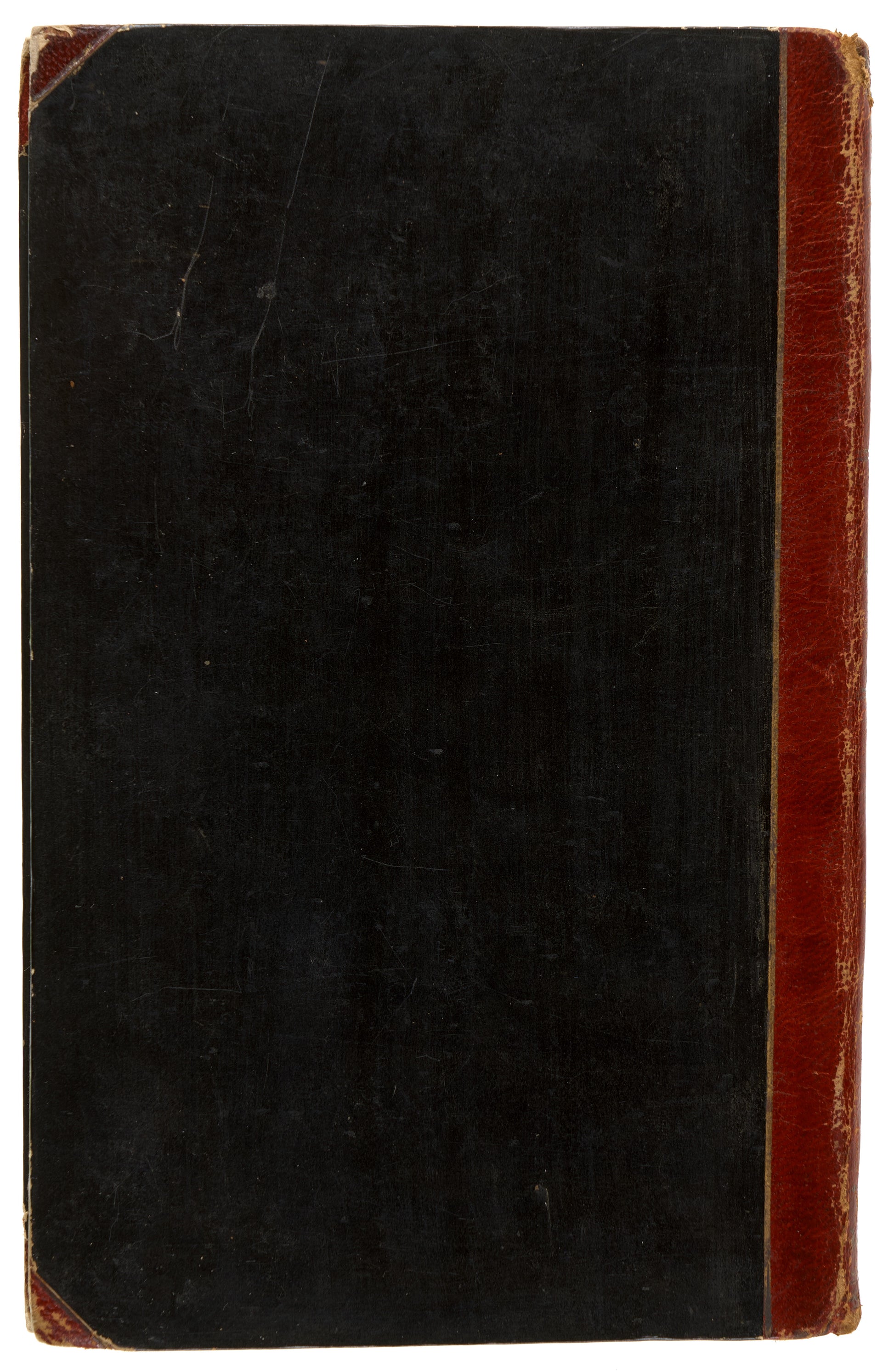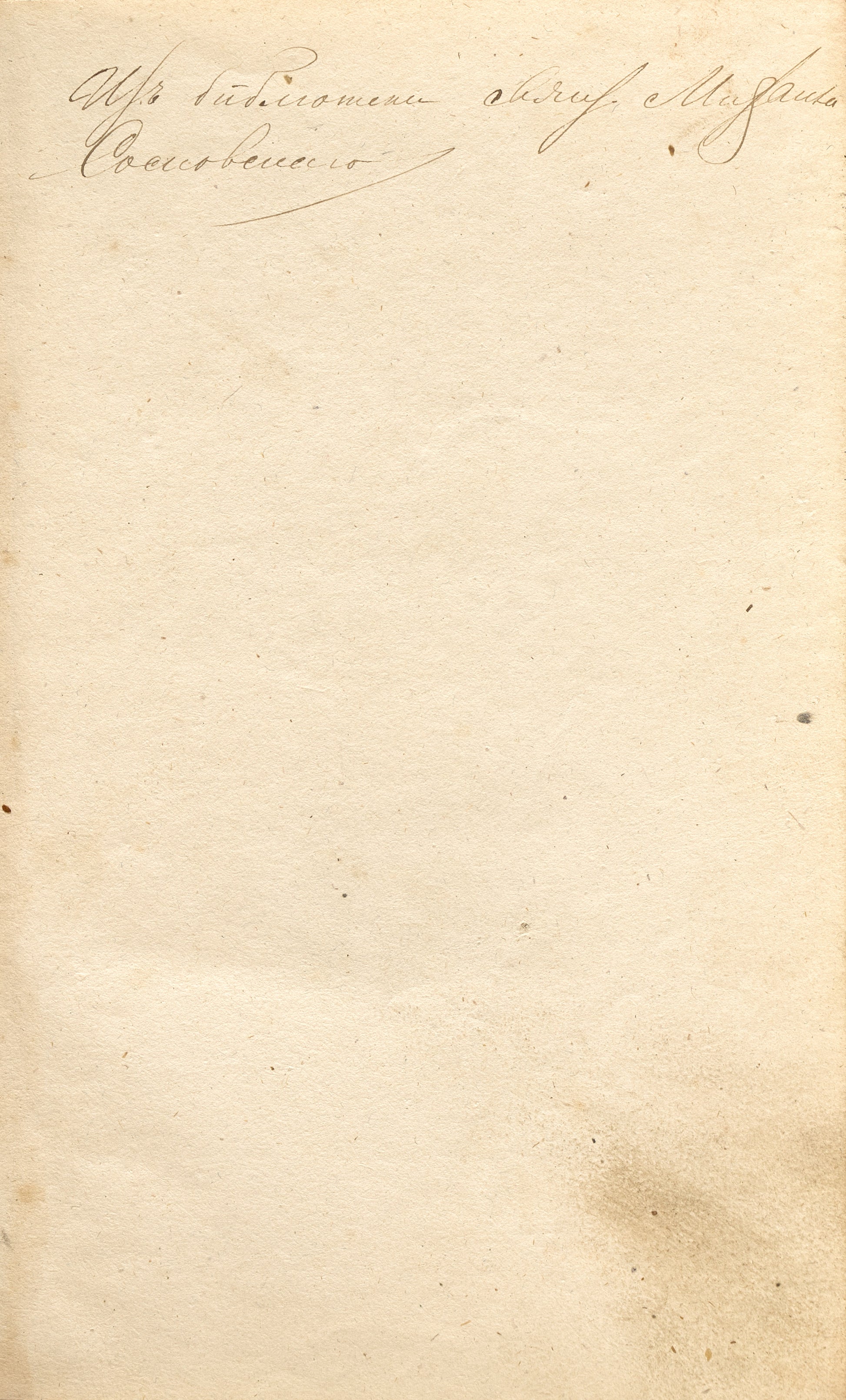Shakespeare, William
Hamlet, Prince of Denmark. First introduced Dostoevsky to Shakespeare
Hamlet, Prince of Denmark. First introduced Dostoevsky to Shakespeare
Couldn't load pickup availability
Shakespeare, William [Hamlet, Prince of Denmark: A Dramatic Performance]. Gamlet, Prints Datskii: Dramaticheskoe predstavlenie.
Translation from English by Nikolai Polevoi.
Moskva, v tipografii Avgusta Semena, 1837.
8vo, 207 pp.
In contemporary half leather. Stamped to the bottom of the spine POPOV.
In good condition, lightly rubbed to spine and corners, rear hinge cracked, owner signature to first free endpaper 'Iz biblioteki sviashch. Mikhaila Sosnovskogo' [From the library of Father Mikhail Sosnovskii].
First edition of this translation.
It is known that the first Russian translations of 'Hamlet' began to appear as early as 1749, but until 1828, these were incomplete.
The first complete Russian translation of 'Hamlet' appeared in 1828, and a second full translation—by Nikolai Polevoy (1796–1846), a prominent journalist and Romantic writer—marked a pivotal moment in introducing Shakespeare’s tragedy to Russian audiences.
Though Polevoy’s translation involved significant modifications—he omitted certain scenes and characters he deemed nonessential, shortened monologues, and infused the text with contemporary Russian idioms and sentiments — 'Hamlet' nonetheless struck a powerful chord with Russian readers and theatergoers. His portrayal of Hamlet emphasized the character’s spiritual anguish, existential despair, and disillusionment with humanity—resonating deeply with the frustrations of a generation of young Russian intellectuals who yearned for reform but remained politically powerless. This was particularly poignant in the aftermath of the Decembrist Uprising of 1825 and during the oppressive reign of Nicholas I.
Polevoy’s translation also found lasting success on the stage. Its premiere took place on January 22, 1837, at Moscow’s Maly Theatre, with the renowned actor Pavel Mochalov in the title role. The production became a major cultural event, helping to establish 'Hamlet' as a cornerstone of the Russian theatrical canon. Moreover, Polevoy’s 'Hamlet' was performed on stage well into the twentieth century and thus had a stage life far longer than any other translation of its time.
Contemporary critics, including the influential Vissarion Belinsky, praised Polevoy’s adaptation for its emotional intensity and cultural impact: 'it helped to establish the glory of Shakespeare’s name in Russia, not only within literary circles but throughout all reading and theatergoing society' (Levin, Y. Dostoevskii i Shekspir / Dostoevskii: Materialy i issledovaniia, Vol. 1, 1974).
According to some researchers, it was Polevoy’s translation that first introduced a sixteen-year-old Dostoevsky to Shakespeare. It is believed that Dostoevsky memorized entire passages, and they stayed with him so vividly that he continued quoting from this version in the 1860s and 1870s—even after newer translations had appeared.
Polevoy’s 'Hamlet' also influenced Russian literature more broadly: for instance, Anton Chekhov included quotations from Polevoy’s translation in his play 'The Seagull'.
It is also worth noting that the book was dedicated to Serge Poltoratzky (1803–1884), a bibliophile, bibliographer, and friend of the poet Alexander Pushkin. The censor's permission was dated January 29, 1837-the very day of Pushkin's death.
OCLC locates three copies of this edition: in the Folger Shakespeare Library, the New York University Library (Abu Dhabi), and the Polish Library in Paris.






